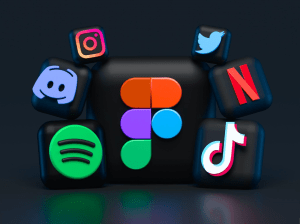
It's no secret that social media has become an important component of many businesses. Social media can help you grow your brand, build a following and connect with customers in ways that were never possible before.
But using social media isn't just about posting on Facebook or Twitter. It's about turning these platforms into an active part of your overall business strategy by creating relevant content for your target audience, building relationships with potential customers through engagement, and building a community around your brand.
There are 3.96 billion active social media users worldwide, according to Sprout Social. Therefore, as a business owner, you ought to benefit from this.
1. Targeting your audience
A good social media strategy will help you reach your audience, engage them and turn them into loyal customers.
Before you start creating an account on Facebook, Twitter, or Instagram (or any other social media platform), it's important that you know exactly who your target audience is. The more specific the better! You want people who are interested in buying from you and would be willing to share their experience with others as well. Once this has been decided, create a plan for how often you will post content related to your business on social media platforms. Make sure that each type of content aligns with the goals of your business and is aimed at driving traffic back toward your website or storefront.
2. Engaging with your customers
The second way is to engage with your customers. This can be done by responding to comments and answering questions, but it also includes sharing content that's relevant to your target audience.
For example, if you're selling dog toys online, you could share a video of a pup happily playing with one of your products. You could also post articles about how to teach dogs how to stay calm on planes or in restaurants (and maybe include links for people who want additional information). The point is that you want social media users who are interested in buying from you and learning from you—but not just anyone off the street!
3. Building relationships
Building relationships with people who are interested in your products or services can help you generate leads, establish yourself as an expert in your industry, and boost sales. You can also use social networking sites like Facebook and Twitter to connect with vendors or service providers, which may lead to opportunities for collaboration on projects and events. And if you’re trying to sell something online, a personal connection with potential customers is going to be more powerful than banner ads alone will ever be.
However, building relationships doesn’t just happen automatically; it takes time and effort on both sides of the equation. In order for someone else’s relationship-building efforts (whether they're yours or theirs) not only be effective but also meaningful long term—i.e., actually lead somewhere—it's important that there's some sort of reciprocation involved in this process; otherwise one person will end up feeling used while another feels taken advantage of by someone who just wanted something from him/her without offering anything back.
4. Having fun with your brand
Show your company's personality. If your company has a quirky or fun side, you can use social media to share that with the world. Share content on Facebook and Twitter that's relevant to your audience but also interesting and fun.
Share content that is relevant and interesting to your audience. You want to make sure you're sharing engaging content through social media so people will keep coming back for more—and not just once in a while, but regularly!
Use humor in posts: People love humor on social media because it creates a sense of familiarity with brands they enjoy following, allowing each interaction they have with the said brand to feel like an extension of their regular interaction patterns within their personal lives. This means using hashtags like #tbt (throwback Thursday) or #cuteanimaloftheday when posting photos of cute animals is much more effective than simply posting photos without any context around them at all; this way it becomes clear why we decided which photos would go into each category.
GIFs and memes can be a fun way to engage with your audience on social media. While they may seem like a gimmick, they can actually help you build rapport with customers and make people more likely to buy from you.
5. Sharing creative content
The fifth social media strategy is sharing creative content. This is a great way to build your brand and position yourself as an authority in your field. If you have a blog or website, then it’s likely that you are already sharing original content on these platforms. You can also share other people’s work on these platforms as well, but make sure that the material is relevant to your business and brand identity. Make sure to make these contents mobile-friendly since most social media users are using phones. Files like AVI and MOV can be compressed to MP4 for better viewing without losing the video’s quality.
Conclusion
I hope these tips have been helpful for you in your social media marketing efforts. Social media is a powerful tool, and it can be used in a variety of ways. The important thing is to find the right combination of platforms and strategies that work best for you and your business, but don’t be afraid to experiment!
Read the books below for more social media tips!


Add a comment to: 5 Creative Ways to Use Social Media in Your Business